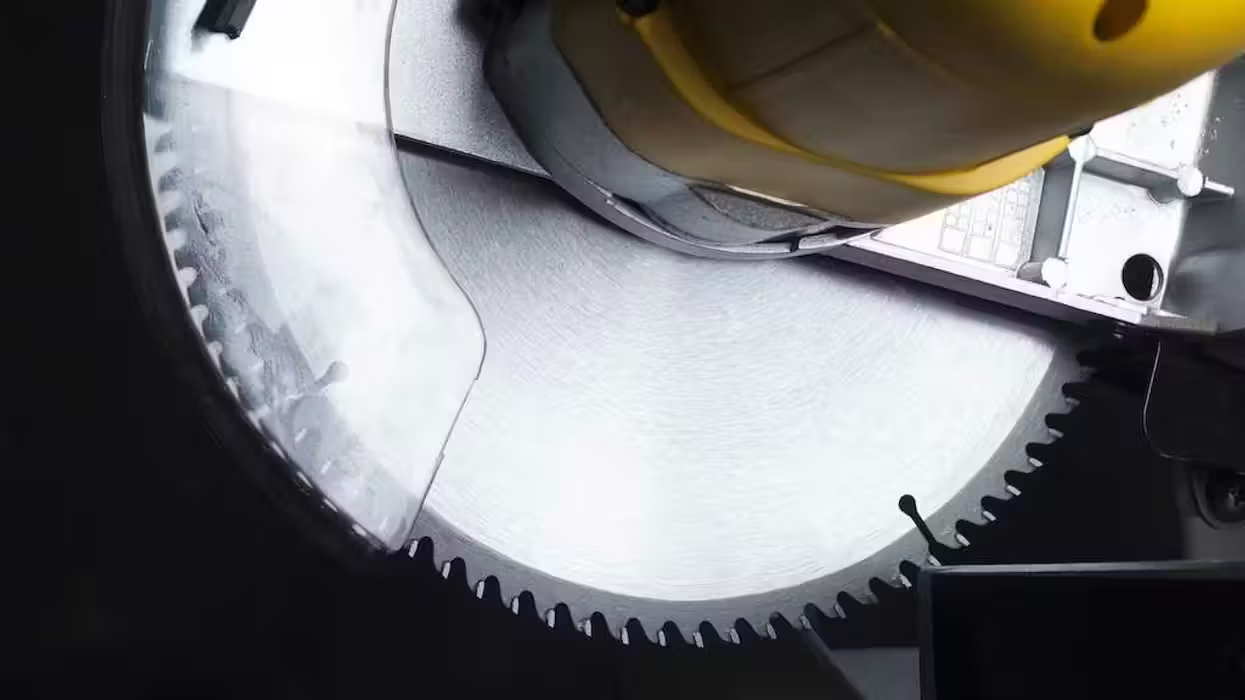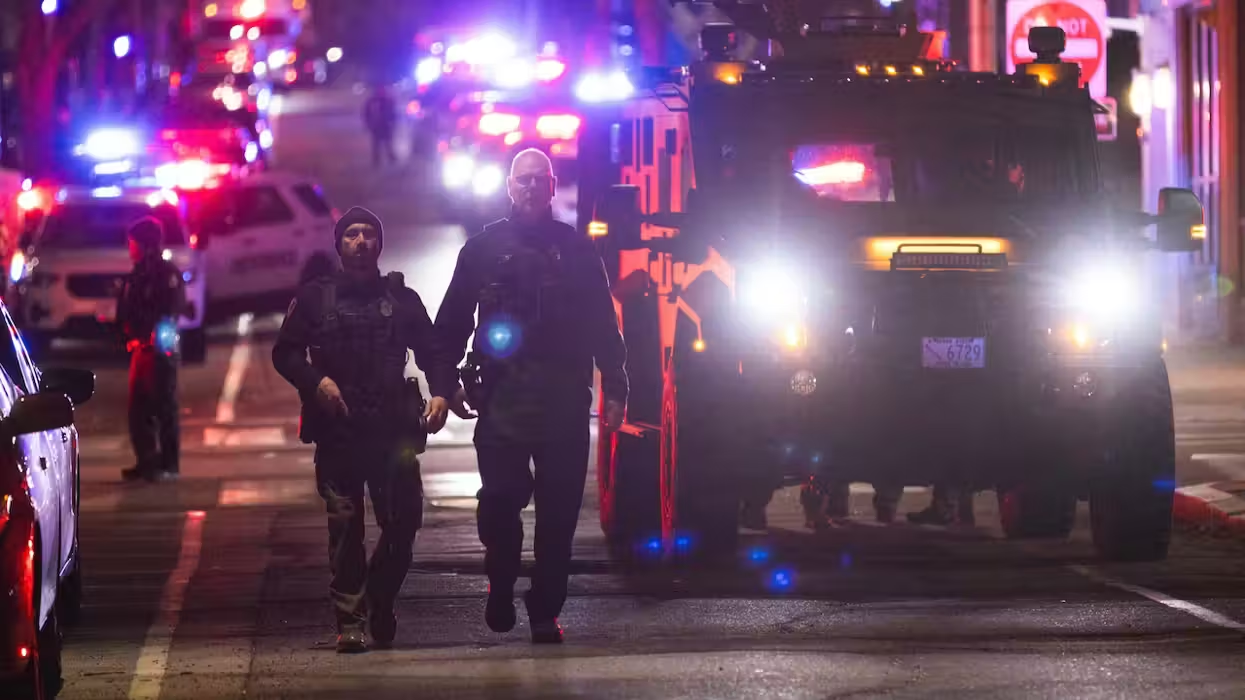In the sci-fi flicks, the "pew pew" sound of a laser weapon is pretty iconic, but creative directors all have their own interpretations of what such a laser gun and its "laser bullet" looks like. But, according to real-life conditions, how would such a beam actually appear?
That's what the Laser Center of the Institute of Physical Chemistry of the Polish Academy of Sciences recently sought to find out in their experiment "A 'Star Wars' laser bullet— this is what it really looks like."
The researchers filmed an ultrashort laser pulse as it shot through the air and viewed the "journey of a light projectile at an extremely slow rate, similar to that watched on cinema screens by science-fiction aficionados," a news release from the institute explained.
 A light pulse fired from a 10 TW laser, dispersing into water vapor. The blue glow is laser light. The source of the other colors is mainly plasma fiber (filament) arising as a result of ionized matter, located in the air in the path of the light pulse. The laser with parametric amplifier NOPCPA was designed and constructed at the Laser Centre of the Institute of Physical Chemistry of the Polish Academy of Sciences and the Faculty of Physics at the University of Warsaw. (Photo and caption credit: IPC PAS)
A light pulse fired from a 10 TW laser, dispersing into water vapor. The blue glow is laser light. The source of the other colors is mainly plasma fiber (filament) arising as a result of ionized matter, located in the air in the path of the light pulse. The laser with parametric amplifier NOPCPA was designed and constructed at the Laser Centre of the Institute of Physical Chemistry of the Polish Academy of Sciences and the Faculty of Physics at the University of Warsaw. (Photo and caption credit: IPC PAS)
"If you wanted to film a single light impulse to move as slowly on film as in our recording, you would have to use a camera operating at a speed of a billion frames per second," Dr. Yuriy Stepanenko, who led the team, said in a statement.
Unfortunately, the camera described by Stepanenko doesn't exist. So the scientists turned to anther trick instead:
A suitably adapted camera was synchronised with a laser generating laser pulses at a rate of approx. 10 shots per second. It was done in such a way that with every subsequent pulse the camera recorded an image minimally delayed than previous one.
[...]
The laser pulse, lasting a dozen or so femtoseconds (millionths of a billionth of a second), was generated by a laser constructed at the Laser [Center] of IPC PAS and FUW. It was so powerful that it almost immediately ionised the atoms it encountered. As a result, a plasma [fiber] – filament – was formed alongside the pulse. By appropriately selecting the operating parameters of the laser, to permit a balance of the complex interactions between the pulse's electromagnetic field and the plasma filament, the laser light beam did not disperse in the air, conversely, it underwent self-focusing. This meant that the pulse could effectively move a much greater distance than low-power pulses, whilst maintaining its original parameters.
 This is a cross-section of light pulse beam with formed plasma filament. At the top is the appearance of several laser pulses passing through a cloud of condensed water vapor. (Photo and caption credit: IPC PAS)
This is a cross-section of light pulse beam with formed plasma filament. At the top is the appearance of several laser pulses passing through a cloud of condensed water vapor. (Photo and caption credit: IPC PAS)
 A laser with power of 10 TW per pulse was constructed at the Laser Centre of the Institute of Physical Chemistry of the Polish Academy of Sciences and the Faculty of Physics at the University of Warsaw. (Photo and caption credit: IPC PAS, Grzegorz Krzyzewski)
A laser with power of 10 TW per pulse was constructed at the Laser Centre of the Institute of Physical Chemistry of the Polish Academy of Sciences and the Faculty of Physics at the University of Warsaw. (Photo and caption credit: IPC PAS, Grzegorz Krzyzewski)
Using this technique, Dr. Pawel Wnuk said that they were able to see "a different laser pulse [...] in every frame of our film."
Watch what they captured:
"It is worth noting that although the light we are shooting from the laser is in the near infrared range, a laser beam like this travelling through the air changes colour to white. This happens since the interaction of the pulse with the plasma generates light of many different wavelengths. Received simultaneously, these waves give the impression of white," Dr. Stepanenko said.
(H/T: Science 20 via Reddit)

 A light pulse fired from a 10 TW laser, dispersing into water vapor. The blue glow is laser light. The source of the other colors is mainly plasma fiber (filament) arising as a result of ionized matter, located in the air in the path of the light pulse. The laser with parametric amplifier NOPCPA was designed and constructed at the Laser Centre of the Institute of Physical Chemistry of the Polish Academy of Sciences and the Faculty of Physics at the University of Warsaw. (Photo and caption credit: IPC PAS)
A light pulse fired from a 10 TW laser, dispersing into water vapor. The blue glow is laser light. The source of the other colors is mainly plasma fiber (filament) arising as a result of ionized matter, located in the air in the path of the light pulse. The laser with parametric amplifier NOPCPA was designed and constructed at the Laser Centre of the Institute of Physical Chemistry of the Polish Academy of Sciences and the Faculty of Physics at the University of Warsaw. (Photo and caption credit: IPC PAS)






